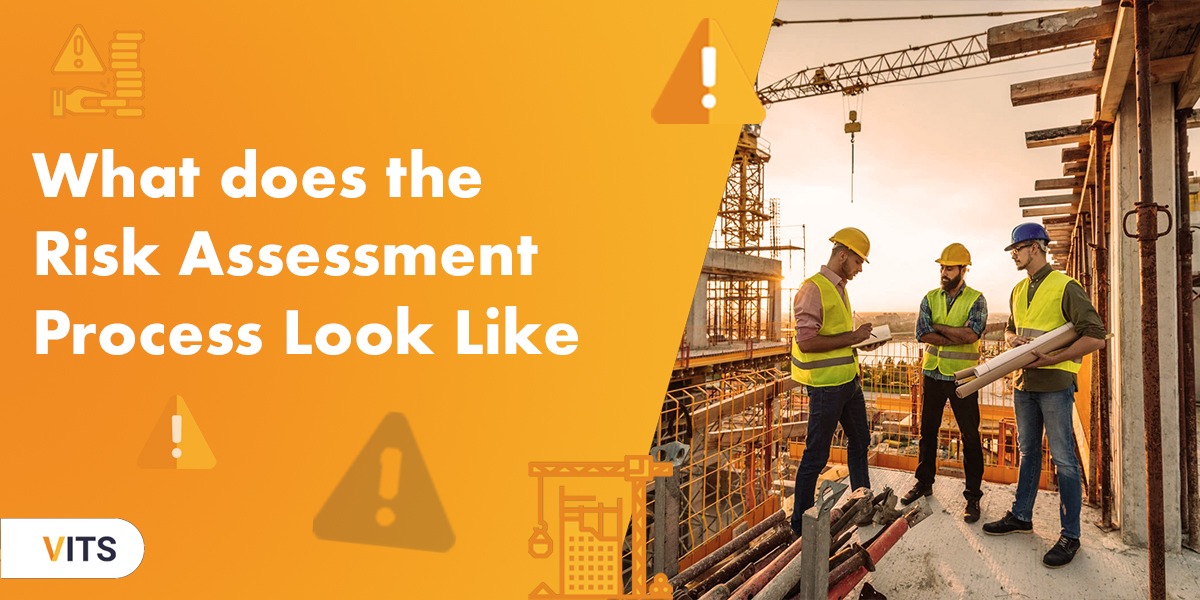When it comes time to assess risks in the workplace, you are probably left looking for guidance.
Here is your complete guide to the risk assessment process. Sure for every industry, it may be slightly different, but the basics are generally always the same, and this guide should be able to be used and adapted to a variety of industries.
If you need any extra help setting up a safe yet simple workplace to manage, contact the VITS team today for some extra guidance.
Quick Recap: What is a Risk Assessment?
Fundamentally, risk assessment assists by providing decision-makers with an understanding of:
- The processes, procedures and situations that could be a risk to the safety of staff and the organisation as a whole
- The likelihood of the hazards turning into incidents and what the consequence most likely will be if these hazards do occur
- The correct course of action if a hazard does become an incident. Most importantly, it allows decision-makers to set up preventative measures to mitigate the risk.
It is important to remember that the risk assessment process involves identifying relevant hazards and calculating the product of the likelihood of their occurrence and a possible consequence.
Understanding the difference between hazards and risks can help you make the right choices for your company.
What’s more, understanding the difference between hazards and risks can also help your company succeed.
Determining the risk allows you to take preventative measures before things go wrong and to prioritize these measures.
Difference between Hazards and Risks
Safety is paramount. Monitoring it involves knowing what hazards exist in your work environment and understanding the level of exposure to these hazards.
Knowing the risks will help you understand how to minimise them or eliminate them.
To protect yourself and your employees, you must identify hazards and evaluate them to get according risk levels.
Hazards and risks are two different concepts to consider when determining how to protect your employees.
Hazards are any conditions or processes that can cause harm, including dangerous machinery, slips and falls, hazardous chemicals, and physical assault from clients.
A hazard is any situation that might cause harm to a person or property.
Risk is the product of the likelihood that a hazard will occur and the level of harm it can cause.
As part of your risk assessment plan, you will identify relevant hazards and assess the possible consequences if they happen.
What is the Goal of a Risk Assessment?
The goals of a risk assessment plan will most likely be quite different across industries. However, the overall goal is to continuously identify hazards and evaluate them, develop plans and procedures to mitigate the risk and implement procedures to ensure a safe workspace.
It is considered best practice to use an established risk assessment plan reviewed and updated by various industry professionals.
Other goals include:
- Identify and analyse potential hazards
- Reduce the risk of work-related illness and injury
- Stay legally compliant
- Improve staff safety awareness
- Cultivate safety culture in the workplace
- Provide reasoning for safety budget
- Understand available assets and identify return on investment
When Should Risk Assessments be Performed?
When new activities, jobs, tasks or processes are introduced, organisations should perform a risk assessment.
This includes amendments to existing activities and procedures as well as when machinery needs to be changed or before commencing work activities on a new job site.
Businesses should always carry out risk assessments to ensure that any dangerous working practices can be stopped or minimised.
Using health and safety management software to help you is vital as they will be able to make sure that your assessment covers all aspects of your workplace and that you cannot simply remove possible danger points but make sure that the risks are assessed and managed realistically.
A risk assessment process can help companies identify and assess potential hazards and prepare for incidents that can cause harm to the company or its employees.
Properly assessing risks is critical to avoid a harmful incident, saving time and money, preventing harm to employees, and reducing downtime.
While industries will differ, the primary risk assessment steps will remain the same.
Follow these simple steps so that your organisation’s risk assessment is integrated smoothly into your health and safety management plan.
Ultimately, after following the correct steps, your organisation should be ready to deal with any hazard as well as reduce the likelihood or consequence of risks turning into dangerous incidents.
Risk Assessment Steps
Step 1: IDENTIFY
Identify Hazards
The first step toward devising a risk assessment plan is to identify the relevant hazards facing both your employees and your business. These could include:
- Fire and explosion risk
- Physiological hazards
- Biological hazards
- Equipment related hazards
- Workplace accidents
- Mental health hazards
- Emergency situations (such as bomb threats, strikes, robbery, natural disasters etc.)
- Chemical hazards
- Supply chain interruptions
Examine your workplace, including a review of employee incident reports and remote workers.
Think about how activities that happen at work could potentially cause harm to your organisation.
It could be helpful to spend some time looking back at past accident reports to see what types of hazards have impacted your work environment in the past.
Step 2: DECIDE
Decide where the danger is and who is at risk.
When looking at your business operations, identify the people who will be harmed if specific hazards are realised.
May they be employees, contractors, rental workers or clients. Talk to them about their activities in the workplaces and previously occurred safety deviations.
Step 3: EVALUATE
Evaluate the hazards you have identified
You need to consider which threats are likely to materialise and which would have the most severe consequences if they did.
This evaluation will help you focus on implementing effective risk reduction methods.
Step 4: RECORD
Record the findings (risks and potential hazards) and implement control measures.
To be in compliance with government regulations, if you have more than five employees in your office, you are required to write down your risk assessment plan.
To ensure that your company is a safe and healthy place to work, you must write down your risk assessment process.
This will allow you to thoroughly evaluate the hazards of your workplace and produce a hazard management plan.
P.S: You’re in luck! We’ve got a free workplace safety plan template for you to use, and never worry about this again.
The recorded risk assessment should detail the following:
- The organisation conducted an in-depth risk assessment of the workplace
- Which employees would be at risk
- Apparent hazards were dealt with
- Precautions were put into place to mitigate and manage existing risks
- Employees were involved in the overall process
Step 5: REVIEW
Ensure the assessment and follow up are regularly reviewed and any necessary changes are made.
As new equipment, processes, and people are introduced into your workplace. They can also introduce new hazards.
You should constantly keep track of these changes and update your risk assessment process accordingly.
The Bottom Line
Assessing risks in the workplace is no easy task for a risk assessor or for an employer.
In fact, it can be a difficult process for anyone and often leaves those tasked with it feeling overwhelmed and stressed out.
So what if you were able to create your own accident risk log quickly and at the same time ensure your workplace was as safe as possible?
That’s the goal of VITS— to show you just how easy it can be to make your workplace safer while maintaining a great work environment.







